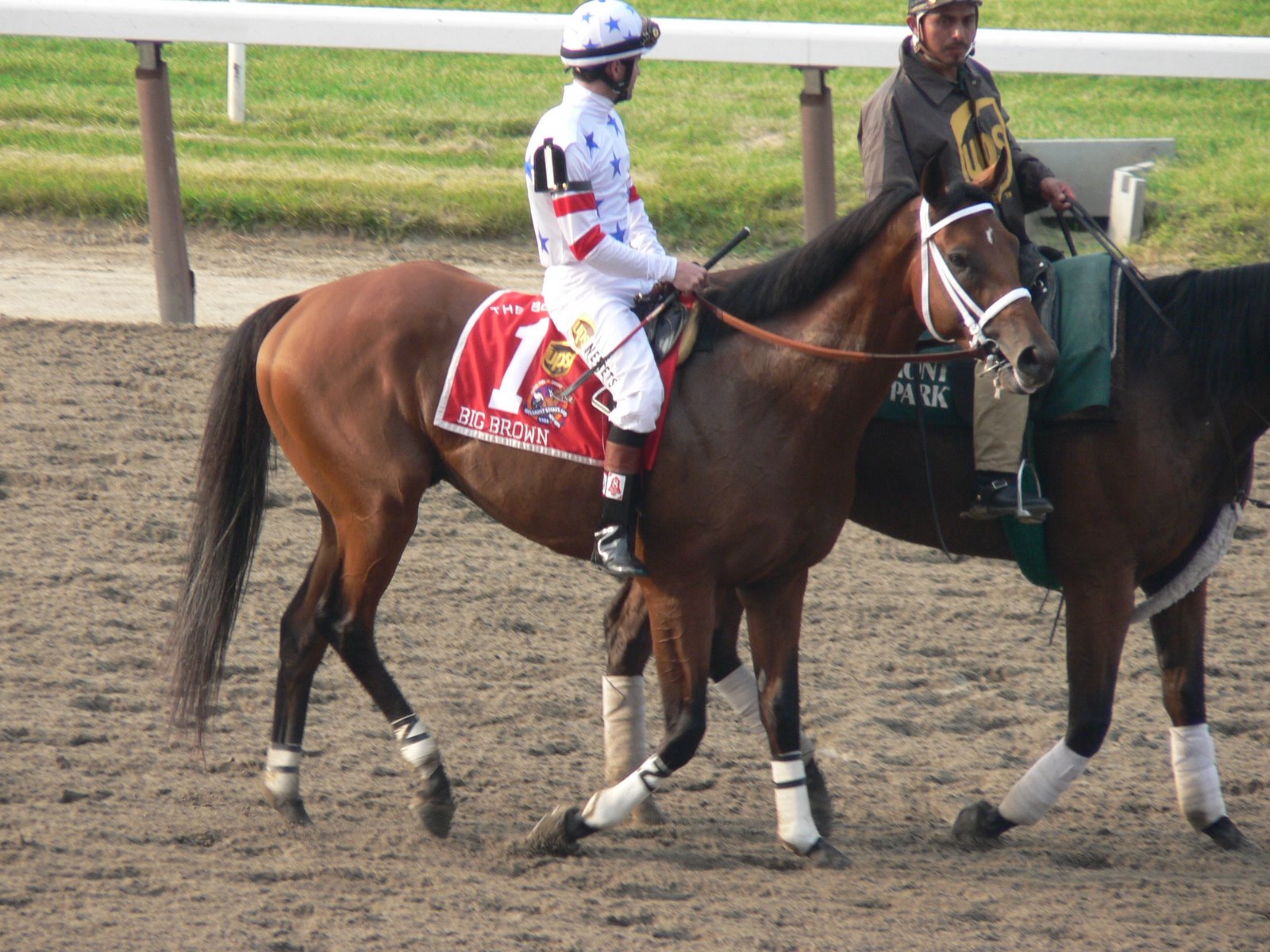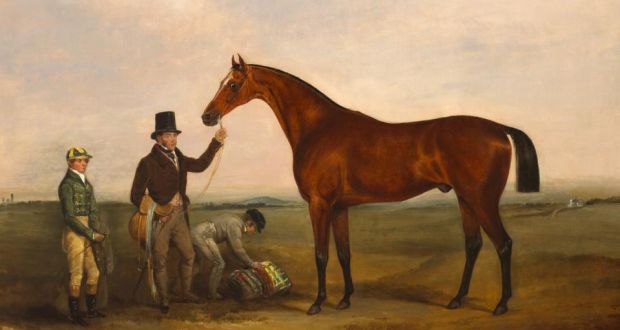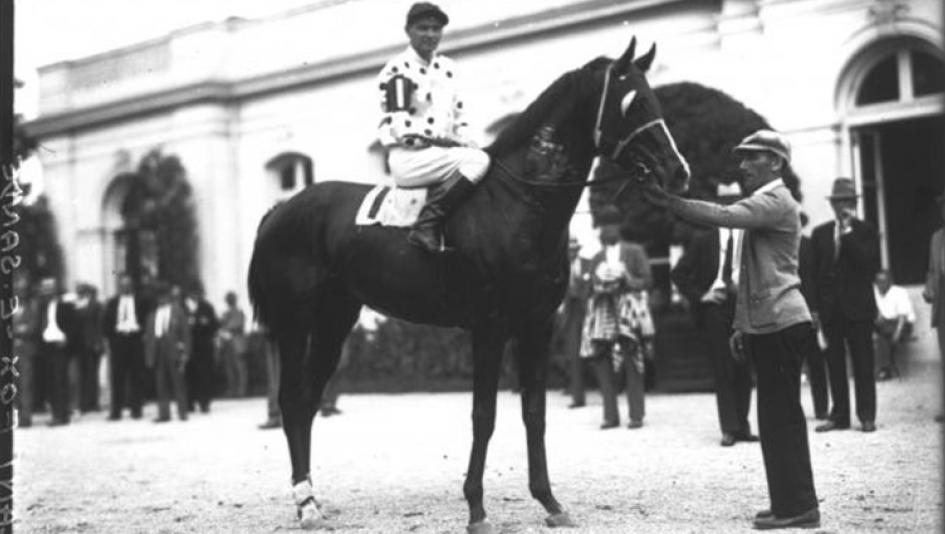
Number has huge influence in sports and our lives
By BILL REITER
Kansas City Star Sunday June 1, 2008
McClatchy Newspapers
As Big Brown faded along the final stretch of dirt Saturday at Belmont Park, he lost more than horse racing’s 12th Triple Crown, more than glory, more than the imagination of fans hoping to witness history. He’d been chasing something perhaps mystical: the number three.
“It’s the magic number,” said Michael Eck, a math professor so enamored with all things in threes he started the Web site www.BookofThrees.com and has written papers on the subject.
“Everything is connected by this pattern of threes.”
That pattern put Big Brown in position to win the Belmont Stakes, which in itself wouldn’t be earth-shattering. But winning the three arbitrary races that make up the Triple Crown, well, that’s where physics, religion, philosophy, math and meaning connect with sports.
We love to celebrate the three, hold it in high esteem, put it on T-shirts and in history books.
The three-peat. The triple-double. The hat trick. Achieving something twice gets you noticed, but three times gets you carved in history.
Thirty points, 10 rebounds and nine assists?
Big deal.
Back-to-back titles?
The Lakers, Celtics and Bulls might send out a head nod when you do it again.
So you led the league in batting. Nice, but where’s your power, your run production, your place among baseball’s giants?
And now Big Brown knows how it feels to fall short. He’s the 19th horse to win the first two legs of the Triple Crown but not the Belmont Stakes.
If you want some props, do it twice. If you want immortality, well, the third time really is the charm.
Nearly every sport, and many human endeavors outside of competition, has a hallowed principle based on the first odd prime number. Three has ensconced itself in politics (three branches of government), daily life (three meals a day), religion (the trinity), fairy tales (the three bears), time (past, present and future) and nearly every other subject.
And, of course, it is the building block of art-from which, many would argue, sports emerged.
“Think of the Golden Mean, which goes back to ancient Greeks who applied it in their sculptures,” said Gabriel Schechter, a research associate at the Baseball Hall of Fame in Cooperstown, N.Y.
“It’s an aesthetic in photography, nature, painting-it’s the sense of unequal thirds.”
Bear with us for a moment. This is going somewhere.
“In a lot of paintings, they’re in thirds, but one is darker, one is lighter, one is larger,” Schechter said. “But it’s the principle that one with the Golden Mean is more aesthetically natural and pleasing to the eye, and it makes it more presentable and understandable if it is presented in unequal thirds. It’s in almost all real works of art, in nature, in sculpture, and in baseball.”
There are three strikes in baseball, and each is different-a different pitch, a different part of the plate, a different response from the hitter. Unequal thirds.
The attempt to capture those three strikes leads to three outs-also unevenly achieved, again the unequal thirds of the Golden Mean-until this happens three times three for nine innings.
“Some are beautiful and some are jarring, but at the end of the inning, it still adds up to three,” Schechter said.
OK, so we see how the number three can be used as an organizer, to keep things neat. But why we put the number three on a pedestal also speaks to how we see the world and struggle to understand our place in it.
It speaks to how we physically construct our homes: “We have a response not just to the number three but its physical form, a triangle,” said Char Miller, a professor of history at Trinity University in San Antonio and visiting professor of environment analysis at Pomona College in Claremont , Calif. “As any carpenter will tell you, and if you look at roof lines and various buildings, they’re filled with triangles. They’re very strong.”
The power of 3: Number has huge influence in sports and our lives
It speaks to how we grapple with the question of a higher power: There is the trinity in Christianity. It is a sacred number in Judaism. It represents the masculine in many African religions.
“We’re very comfortable with this sense of threes as an organizing quality,” Miller said.
It also speaks to how we as humans process information and then express it.
“What we do as human beings is we take things and (put) them into three parts,” Eck said. “Two things repeat and could be a coincidence. Three is where conceptual knowledge takes place. It’s how we break things up to understand things. It doesn’t take place in the real world, but we as humans have created this. It’s the perfect number as a thought.
“Freud (put) the brain into three parts: ego, superego, id,” Eck said. “It’s simply completion for us: Of the people, by the people, and for the people.'Once, twice, three times a lady.’ It doesn’t even have to make sense, but it seems complete.”
More examples: “Christ was dead, Christ is risen, Christ will come again,” Eck said. “It’s a perfection sentence because of its completeness. `Three blind mice.’ In Japan you have morning rice, noon rice and evening rice-that’s what they call breakfast, lunch and dinner. We all, everywhere, chunk knowledge into threes.”
How this began in American horse racing remains unclear.
The British had their Triple Crown going back to 1853 made of the Epsom Darby, Guineas Stakes and St. Leger Stakes.
“When the Triple Crown started in the United States, it was attributed to Charles Hatton, a very famous turf writer,” said Allan Carter, a historian with the National Museum of Racing and Hall of Fame. “He said he thought of it, but he didn’t. We found a lot of references to it before he started writing … but it turns out he didn’t make it up.”
A group of New Yorkers started their own version of the Triple Crown around 1902, Carter said, going so far as to create a race as part of the attempt. But it soon fizzled.
The first winner, Sir Barton, who competed in 1919, was retroactively given the award. By the time Gallant Fox won in 1930, there was a communal sense that, for whatever reason, winning three random races was special in a way folks couldn’t explain.
Even then, people simply felt drawn to the number.
“I asked that, why three, why those three?” Carter said. “Hell, it was almost 200 years ago (that it started in Britain). I don’t know. I can’t even tell you why they picked the Derby, the Belmont and the Preakness. In fact, the Preakness wasn’t even a stakes race for many years, and it dropped off the map around 1894.”
Perhaps trying to explain why Big Brown’s run Saturday meant so much is to question, in many ways, the meaning of the universe.
Take Wendy Garrett. She is a psychic-she prefers the term “intuitive”-with Intuition and Insight in Mission, and she believes the number three does, indeed, connect us to things we don’t see.
“For me, it’s really important-and it’s a number I have to work with a lot-because it’s mind, body and spirit,” she said. “As human beings, we get caught up in things more related to logic, and we think if we cross the T’s and dot the I’s it’ll all add up. But when we work without the spirit, it doesn’t all add up.”
And so, she said, we have this situation: We have athletes competing and putting up numbers and horses preparing and finishing in races, but it is the third realm-the spirit realm-that speaks through the number three.
Which, she said, is why things like the Triple Crown seem so right, and true, and important.
END ARTICLE
Historical Mentions
West Australian

(1816 – 1882)
West Australian, with Jockey Up & Trainer
Oil on canvas
23 x 30 inches
Signed, inscribed and dated 1853
West Australian was the first horse to win the Triple Crown
in England.
Winner:
- Derby, 1853
- St. Leger, 1853
- The Ascot Gold Cup, 1853
Gallant Fox

Gallant Fox, pictured here with jockey Earl Sande and trainer James “Sunny Jim” Fitzsimmons (pictured in the fedora) after winning the Kentucky Derby in 1930. The “Fox of Belair” captured not only the Kentucky Derby, but the Preakness and Belmont Stakes to become the second horse in history at the time to sweep all three races.
(Photo courtesy of The Blood-Horse)






























